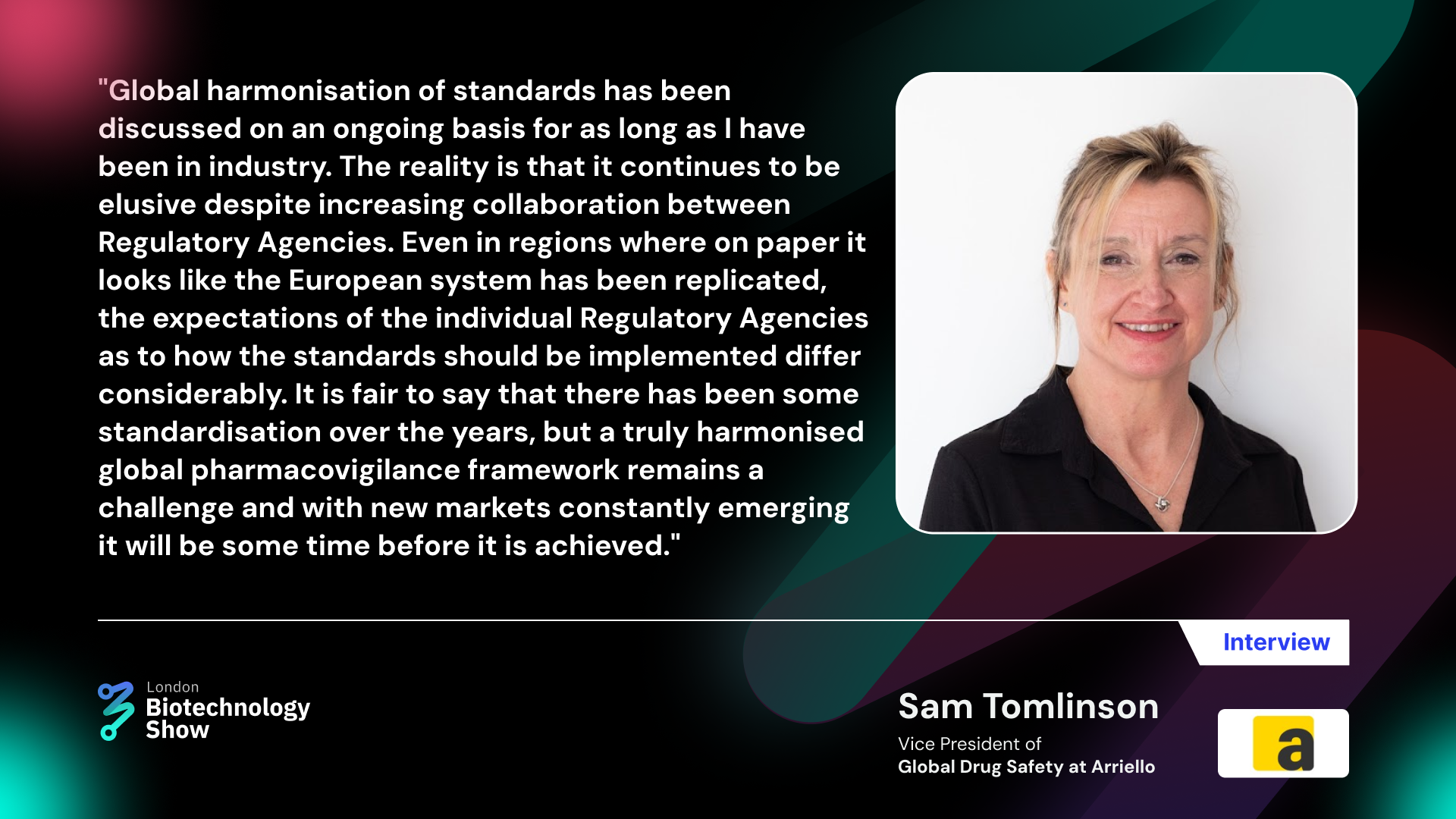As biotechnology continues to rapidly transform the medical and healthcare realms, Pharmacovigilance finds itself challenged to match the speed of innovation in assessing the safety of emerging products entering the market and that too when they undergo continuous refinement. How to address this issue was the central theme of a recent interview between Sam Tomlinson, Vice President of Global Drug Safety at Arriello and Muhammad Younis
#LBS: In the rapidly evolving landscape of biotechnology and pharmaceuticals, what do you see as the most pressing challenges for ensuring patient safety and pharmacovigilance, and how do you propose addressing them?
Sam Tomlinson: It may sound like a cliché but the biggest challenge we face in Pharmacovigilance is how we keep up with the pace of change. There is innovation on every front, new medicines that are increasingly more personalised and specialised, the use of digital therapeutics, and the use of Artificial Intelligence solutions for the management of data are just a few of the big-ticket items. Whilst this makes our industry an exciting place to be, the truth is that we need to find a way to be both highly process driven, but still flexible and dynamic enough to keep up with the speed of change and innovation. This can feel like a bit of a juxtaposition. I don’t know that there is a way to solve this issue, but there are ways to mitigate it. The first is by having a robust process for monitoring change, which in turn allows you to anticipate and plan for the future state when mapping your PV system. Then as you develop your procedures, you can define where you are today but ensure that procedures are pragmatic, scalable and engineered with the future in mind.
#LBS: With the increasing utilisation of advanced therapies such as gene and cell therapies, what unique safety considerations do you believe must be prioritised, and how can regulators and industry collaborate to effectively address these challenges?
Sam Tomlinson: Advanced therapies come with a number of challenges in relation to Pharmacovigilance. The complexities inherent in ATMPs differ significantly from conventional pharmaceuticals, which has necessitated a change in the traditional way safety and efficacy is established and managed. ATMPs often are targeted at very small patient populations, involve complex manufacturing processes and novel mechanisms of action, and often are subject to accelerated approval which inevitably increases reliance on robust post-market safety assessment. The early detection of potential risks requires a holistic approach therefore collaboration between manufacturers and regulatory bodies is needed alongside the meticulous analysis of data from each stage of development. This will enable us to gain comprehensive insights into the safety profile of ATMPs.
#LBS: In the context of global markets and regulatory frameworks, how do you propose harmonising pharmacovigilance standards and practices to ensure consistent safety monitoring across different regions, especially considering variations in healthcare infrastructure and reporting capabilities?
Sam Tomlinson: I think this may be the million-pound question. Global harmonisation of standards has been discussed on an ongoing basis for as long as I have been in industry. The reality is that it continues to be elusive despite increasing collaboration between Regulatory Agencies. Even in regions where on paper it looks like the European system has been replicated, the expectations of the individual Regulatory Agencies as to how the standards should be implemented differ considerably. It is fair to say that there has been some standardisation over the years, but a truly harmonised global pharmacovigilance framework remains a challenge and with new markets constantly emerging it will be some time before it is achieved.
#LBS: How can pharmacovigilance systems adapt to effectively monitor safety profiles in products that undergo continuous refinement, and what strategies can be implemented to ensure timely communication of safety updates to healthcare providers and patients?
Sam Tomlinson: I think it comes down to building an assessment process that is designed to anticipate and plan for possible changes in the benefit: risk profile with each iteration. With these types of products, the traditional reactive linear approach to safety management is not sufficient and your Pharmacovigilance strategy needs to be pro-active and start at the very early stages of development with the Safety, Quality, Regulatory, Clinical and Non-Clinical teams working as a collective group. Having all the stakeholders at the table can facilitate holistic risk assessment in advance of each iteration, resulting in targeted data analysis and in turn rapid identification and assessment of potential signals.
#LBS: What are your thoughts on events such as The London Biotechnology Show, dedicated to amplifying the global impact of biotech innovations?
Sam Tomlinson: I think it's critical that these events exist, they bring together thought leaders and innovators and provide a forum for discussion and collaboration that can’t be replicated in the virtual world. Events such as the London Biotechnology show enables industry experts to learn from each other, identify potential areas for innovation and share knowledge which can only enhance medicine development and in turn patient’s lives.

